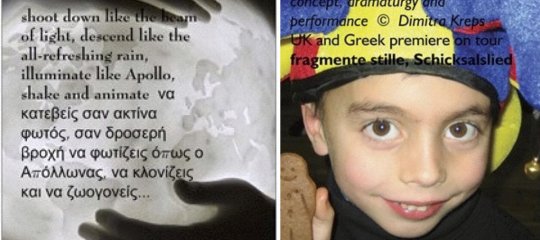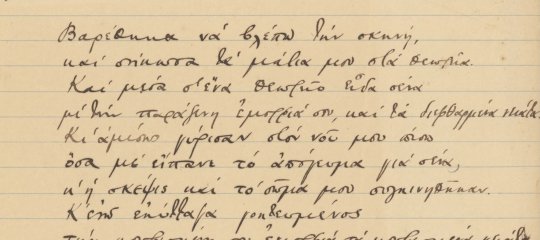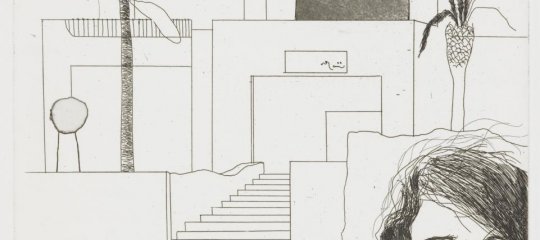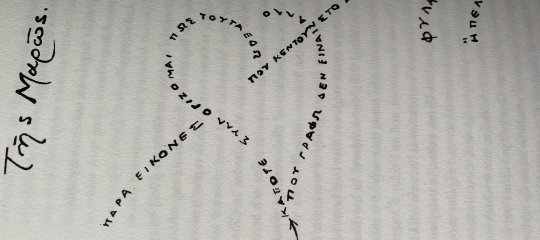Πανεπιστήμιο New South Wales / Η καταγωγή του έρωτα
frantzkyr writes, "Στο Τμήμα Νεοελληνικών Σπουδών του πανεπιστημίου New South Wales, στο οποίο όπως και στην υπόλοιπη Αυστραλία τα μαθήματα αρχίζουν το Φεβρουάριο και τελειώνουν το Δεκέμβριο, συνέβησαν τη χρονιά που πέρασε οι εξής πολιτιστικού επί το πλείστον τύπου δραστηριότητες:
"
3 Νοεμβρίου 2004
Στις 27 Μα'ί'ου 2004 σε συνεργασία του Τμήματος με το Σύλλογο των Ελλήνων φοιτητών του πανεπιστημίου (HELLSOC) προβλήθηκε η ταινία του Σωτήρη Γκορίτσα «Απ’ το χιόνι».
MODERN GREEK LANGUAGES STUDIES
and HELLSOC
invite you
to
A FILM NIGHT
with SOTIRIS GORITSAS film*

followed by a discussion
introduced by students
on the topic
Conflicts and problems relating to migrants entrance to a country and the parallel modern experience of Australia
Venue :Applied Science Building, L1
Thursday, 27th May 2004, 6p.m.
ADMISSION FREE *with English subtitles
Photo: hyperion / from the snow Στη συνέχεια, πάντα στα πλαίσια των μαθημάτων του τμήματος προβλήθηκαν για διδακτική χρήση οι ταινίες των Δημήτρη Κουτσάφτη και Θόδωρου Αγγελόπουλου, «Αγέλαστος πέτρα» και «Ταξίδι στα Κύθηρα». Ευχαριστούμε θερμά το Κέντρο Ελληνικού Κινηματογράφου για τη βοήθεια.
Το τμήμα συμμετείχε ενεργά και πέρσι και φέτος στα σεμινάρια έρευνας που διοργανώνει η Σχολή Σπουδών Σύγχρονων Γλωσσών (School of Modern Language Studies) στην οποία ανήκει. Στα άτυπα αυτά σεμινάρια, τα οποία είναι μια ευκαιρία για γνωριμία, επικοινωνία και γόνιμο διάλογο, τόσο οι διδάσκοντες όσο και οι μεταπτυχιακοί φοιτητές παρουσιάζουν ερευνητική εργασία που έχουν ολοκληρώσει, που κάνουν ή πρόκειται να κάνουν. Η τελευταία συμμετοχή του τμήματος ήταν στις 21 /10 με το θέμα της Ελένης Αμβράζη «Women, Memory and Culture: The case of E. Tsoulis' Novel : Between the Ceiling and the Sky”.
Στις 25 Ιουλίου 2004 υπό την αιγίδα της Σχολής το Γερμανικό Τμήμα διοργάνωσε στο Ινστιτούτο Γκαίτε του Σύδνεϋ συμπόσιο για το θέατρο με διεθνή συμμετοχή με θέμα « The play within the play». Πρόκειται για την παρουσίαση λογοτεχνικών και θεατρικών έργων, παραστάσεων, ταινιών, τελετουργιών, δρώμενων, παιχνιδιών κλπ. που εμπεριέχουν άλλα έργα. Στο συμπόσιο συμμετείχε από το τμήμα ο A. Vincent με το θέμα “Framing Iphigeneia», στο οποίο παρουσίασε το έργο του Πέτρου Κατσα'ί'τη «Ιφιγένεια εν Ληξουρίω» που ανέβηκε στη σκηνή από τον Σπύρο Ευαγγελάτο το 1981. Επίσης η υπογράφουσα, με το θέμα « Re-interpreting Shadow Material in an Ancient Greek Myth : Medea Another Night”, στο οποίο αναλύεται και σχολιάζεται ως αρχετυπική θεατρική καταγραφή η αυστραλιανή διασκευή του μύθου της Μήδειας που ανέβηκε πέρσι στο Σύδνεϋ από το οpera Project του Nigel Kellaway.
Με την ευκαιρία του γεγονότος, μεταφέρω εδώ ένα απόσπασμα από τον πρόλογο του Γιώργου Χειμωνά στην μετάφραση του της Μήδειας του Ευριπίδη (εκδόσεις Καστανιώτη 1989, δεν θα τη βρείτε εύκολα, είναι εξαντλημένη):
"Η ΚΑΤΑΓΩΓΗ ΤΟΥ ΕΡΩΤΑ ΕΙΝΑΙ ΒΑΡΒΑΡΗ...Τώρα απομακρύνεται όλο και βαθύτερα στο σκοτάδι που είναι ο έρωτας - πρέπει να έχει πολύ σκοτάδι ο έρωτας για να μη φαίνεται ότι ο Άλλος λείπει, πρέπει να είχε πολύ σκοτάδι ο βάρβαρος έρωτας της Μήδειας αφού ο Ιάσονας δεν ήταν ποτέ μαζί της: δεν είναι τώρα κι άρα δεν ήταν ποτέ. Αλλά εκείνη ήταν πάντα εκεί ...δε βγήκε ποτέ από το σκοτάδι της –και η έσχατη ερωτική της πράξη προς τον Ιάσονα είναι να τον αναγκάσει να συναντηθεί μαζί της μέσα από τον πόνο του για τα σκοτωμένα του παιδιά....Γιατί ο σκοπός του έρωτα είναι η οπωσδήποτε ένωση και η βαρβαρότητά του η οποιαδήποτε πράξη για να το κατορθώσει."
Κυριακή Φραντζή
University of New South Wales, Σύδνεϋ, 2004
Υ.Γ. Έξω πάμε καλά σα να λέμε.
- Εισέλθετε στο σύστημα για να υποβάλετε σχόλια










